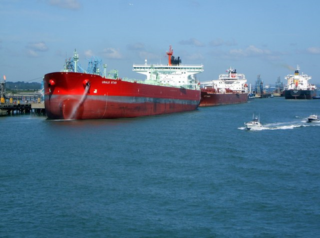-
IMO disunited in setting climate goals, though alternative fuels recognised as future
Date posted:
-
-
-
Post Author
Patrick LaveryCombustion Industry News Editor
-
-
![]()
The International Maritime Organisation has been meeting to discuss possible measures to reduce carbon emissions from the global shipping trade, with the appetite for stringency varying widely between members, as the Financial Times reports. A goal of reducing the carbon intensity of shipping by 40% from 2008 levels by 2030 has been a major discussion point, something that would put the industry on track to achieve at least a 50% reduction in emissions by 2050. With the European Commission known to be considering including shipping in the EU Emissions Trading Scheme, some members of the IMO believe the organisation should set its own international rules before regional schemes are put in place, which, in the words of one trade organisation, would be “the worst thing for the global shipping industry”. Maersk, the world’s largest shipping company, has suggested a global carbon price of US$50/tonne starting around 2025, eventually rising to more than US$150/tonne, and this would be a big step, but so far the most that is generally supported by members of the IMO is a payment of US$2/tonne of fuel used, equivalent to around US$0.7/tonne of CO2. (Members have also agreed to a 2% annual reduction in intensity from 2023 to 2026.)
This money would be used to fund research into clean fuels; one projection is that by 2050, oil will still account for 50% of shipping fuel, the other half being made up of biofuels, hydrogen and ammonia. China, Russia and many developing countries are opposed to anything higher than the US$2/tonne of fuel, which they would see as “the developed world telling the developing world to stay where they are”, according to a former senior IMO official. With shipping currently accounting for ~2.4% of global emissions, and trade expected to increase in coming years, shipping is likely to become a bigger and bigger focus of attention, and alternative fuels a fixation.

